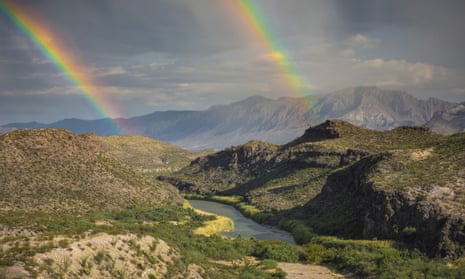A US senator has introduced a proposal to conserve 30% of the country’s lands and seas in the next 10 years, amid a surge of similar proposals.
The initiative, brought by the New Mexico senator Tom Udall last week, is called the “30 by 30” plan. In the US, 12% of land area is protected, according to Udall, mostly in Alaska and the west. If passed, the resolution would align the United States with international goals to protect and preserve nearly a third of the world’s land and water by 2030.
“The United States faces a conservation and climate crisis, with nature in a steep decline and greenhouse gas emissions not declining at the rate scientists say is needed,” according to the proposal. “Nature, like the climate, is nearing a tipping point.”
Currently, about 15% of the world’s land and 7% of its ocean waters are protected, said the National Geographic explorer-in-residence and former oceanography professor Enric Sala.
The goal of 30% is the midway point to a much larger conservation goal – some environmental experts argue that in order to prevent climate collapse, 50% of the Earth will need to be conserved and protected by 2050.
“If we want to prevent the extinction of a million species, and the collapse of our life support systems, and if we want to prevent irreversible catastrophic climate change, we need at least half of the planet in its natural state,” Sala added. “That’s what science is telling us.”
Similar pushes are already occurring at the state level. State bills for 30 by 30 goals have been introduced in South Carolina and Hawaii, and just a few weeks ago, California’s governor, Gavin Newsom, signed an executive order promising to protect 30% of the state’s land and coastal waters by 2030.
Exactly what areas could count as protected, and how the protections would be enacted, is still up for debate – the Senate resolution focuses on the priority of the goal rather than concrete steps. The not-for-profit Center for Western Priorities lists a number of possible “pathways to protection” that include private conservation, indigenous land management efforts, and renewable energy partnerships.
An impediment to the goal is a slew of policies passed in the last four years by the Trump administration, which opened up previously protected public lands for oil and gas development.
The 30 by 30 plan is a goal of the United Nations Convention on Biological Diversity, and 64 countries’ political leaders have pledged to support it. In terms of international cooperation, however, the US election in November – and the administration that follows – could play a critical role.
Donald Trump has withdrawn the United States from multiple environmental agreements, including the Paris climate accord, a year-long process that will be finalized the day after the November election. And the administration’s current record, which emphasizes deregulation and industry-friendly land use over conservation, reflects policies counter to the initiative’s spirit and intent.
“What happens in November affects everything in terms of conservation, but in terms of 30 by 30 specifically, it is a goal with broad bipartisan support,” said Aaron Weiss, deputy director of the Center for Western Priorities. “[Still], I wouldn’t say that this is something that could only happen under a Biden administration, or could not happen under a Trump administration.”
For Sala, the explorer, the issue is an existential one.
“Our natural world is our life support system,” he said. “Everything we need to survive – oxygen, food, clean water – depends on the survival of other species … so this is not about saving nature. This is about saving ourselves.”
